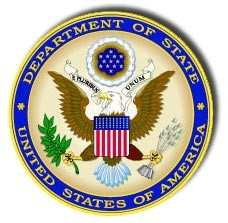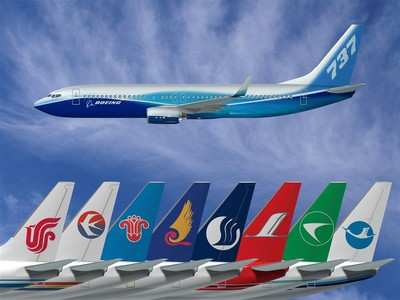Two-Day 'Open Skies' Summit Underway In Beijing
 Liberalization of air
services between the United States and China is one of the US
administration's top priorities in civil aviation as economic
relations between the two countries continue to expand at a rapid
pace, US officials say.
Liberalization of air
services between the United States and China is one of the US
administration's top priorities in civil aviation as economic
relations between the two countries continue to expand at a rapid
pace, US officials say.
"Ultimately the goal is to do everything in our power to fully
liberalize our aviation relationship with China, thereby expanding
service, destinations and frequencies," Transportation Secretary
Mary Peters said in a recent speech.
To that end, a US delegation is visiting Beijing on January
30-31 to restart talks on an "open skies" agreement with China.
Bilateral open skies agreements give airlines in both countries
the right to operate air services from any point in one country to
any point in the other, as well as to connect those flights to
points in third countries. These pacts eliminate restrictions on
air services with regard to frequency of flights, the type of
aircraft and other aspects.
Previous negotiations for an open skies agreement with China,
which began in April 2006, were suspended when the Chinese
cancelled an August 2006 session over an unrelated issue. That
issue has since been resolved, and the December 2006 Strategic
Economic Dialog meeting in Beijing has given new impetus to open
skies negotiations.
Andrew Steinberg, assistant secretary of transportation for
international affairs, told the US State Department's news service,
USINFO, "We are happy we are back at the table."
Steinberg is part of the delegation, as is Thomas Engel,
director of the State Department's Office of Aviation
Negotiations.
In 2004, the two countries reached a bilateral agreement to
increase the number of US-China routes from four to nine with 249
flights by 2011.
"That's really a small fraction of what we need and what market
potential would justify," Steinberg said.
Steinberg added a bilateral open skies agreement would bring
huge economic gains to both countries. According to Transportation
Department estimates, a single daily flight by a wide-body jet from
a US airport to China generates about $213 million annually in
economic activity.

But Chinese carriers, which are mostly state-owned, are
pressuring China's leaders not to hurry with liberalization,
according to a source close to the negotiations. Chinese airlines
have a smaller market share of the two-way market than US carriers
and are afraid to lose more if the market is fully opened.
US officials say China's rapidly growing aviation market would
benefit from increased liberalization through increased investment,
more jobs, greater consumer choice, technological advancements and
improved levels of service.
Steinberg said the US aviation relationship with China goes
beyond commercial air services. Bilateral technical cooperation,
which covers air traffic, aviation safety and airports, has
intensified in recent years. For example, the US FAA has provided
Chinese civilian aviation authorities with help in their efforts to
redesign China's air traffic control system, and with the
certification of the first regional jet developed and manufactured
by Chinese companies.
"We want to be a true partner with the Chinese," Steinberg said.
"As world leaders in civil aviation technologies and services, we
have a lot of expertise to share."
 Unfortunate... ANN/SportPlane Resource Guide Adds To Cautionary Advisories
Unfortunate... ANN/SportPlane Resource Guide Adds To Cautionary Advisories ANN FAQ: Turn On Post Notifications
ANN FAQ: Turn On Post Notifications ANN's Daily Aero-Term (04.29.24): Visual Approach Slope Indicator (VASI)
ANN's Daily Aero-Term (04.29.24): Visual Approach Slope Indicator (VASI) ANN's Daily Aero-Term (04.28.24): Airport Marking Aids
ANN's Daily Aero-Term (04.28.24): Airport Marking Aids ANN's Daily Aero-Linx (04.28.24)
ANN's Daily Aero-Linx (04.28.24)




